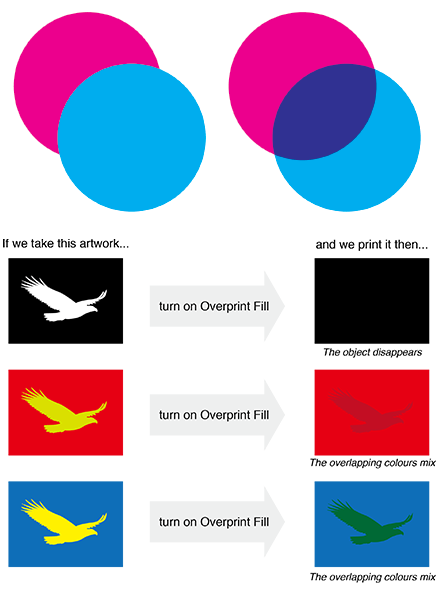What is Overprint and why you should be Aware of this Setting!
What exactly is overprint? This happens when one color object overlaps another, and it may be used to create distinctive effects inside a design.
We employ four-color plates on lithographic presses: cyan, magenta, yellow, and black.
For example, if we were printing a design with a cyan backdrop and a purple block, the press would use the cyan and magenta plates to achieve the desired purple hue.
If we wanted to add white text to the design, we’d use the same plates but with the text ‘knocked out of the file,’ which means you tell the press to print nothing behind the text, just a white space with no ink. As a consequence, we’d have a colorful background with white letters.
However, if the white ink was set to ‘overprint’ in the file, the press would print the colors behind the white text, filling the place where the white text should be with the link from the other plates. As a consequence, the white letters appear to disappear.
When you adjust your printer to not overprint, the color below is removed. The color beneath the front layer of the artwork is left unprinted, leaving simply the color of the front layer. Color mixing is not possible with this approach. Colors are prevented from merging, getting muddy, or becoming too saturated as a result of this.Printing a magenta ink over a yellow, for example, may be ideal if the things are to be knocked out.
Here are some essential suggestions for using overprint in your design, whether you are a graphic artist or a graphic designer:
In the printing industry, black is commonly used to overprint on top of other colors. Overprinting 100 percent black over diverse colors results in a deeper black.
Because there is no standard white ink in printing, you never set up white ink to overprint. As a result, if you select to overprint a white item, it will not appear in the printed output. The only thing that would be printed is the layer underneath it.
Please click the button below to order your
eye-catching promotional material!.



Recent Comments